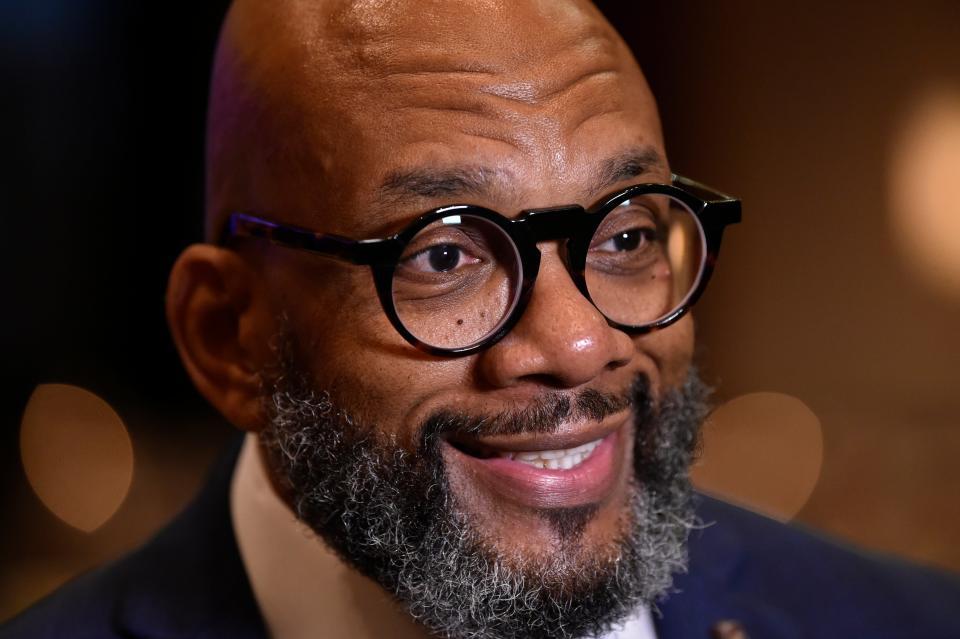Frustration, trauma bubble up in Black community in wake of NY hate crime
The grocery store, church, and spas are just a few of the places where people of color have been targeted and killed in hate-filled violent attacks such as the recent Buffalo, New York, mass shooting where a white man drove 200 miles to a historic Black neighborhood and shot 13 people in a store – 11 of whom were Black.
The mass shooting, which is now being investigated as a hate crime by the Department of Justice, has prompted a resurgence of trauma and grief in Black Americans due to continued racial attacks on the targeted community, experts and local community leaders said.
OPINION: Racial shooting reveals our duty to speak up
COMMUNITY BRIEFS: Black Voter Experience' panel; Sarasota Opera camps; Second Heart Homes
Despite the physical distance from the shooting, African Americans in the region are faced again with a collective trauma that bubbles up following racial attacks on the Black community. But that isn’t new, says attorney and mother Nurisha Harvey.

Harvey, the daughter of a global diplomat and civil rights judge, points to the weight of generational trauma from centuries of ‘hate-filled’ acts that target Black people as the biggest trigger for communities of color when hate crimes occur.
“We know the Black population is a targeted population,” Harvey said. “The reality is Black, and brown, people have been targeted at vulnerable spaces historically. You have the Jim Crow era, church bombings, and lynchings. We’ve had our shopping areas targeted; they’ve destroyed our banks. If you go back and look this is not new, it’s just a repeat,” she said.
Also: North Carolina student wins Embracing Our Differences’ People's Choice Award
Harvey, and other local community member, call the Buffalo shooting an act of domestic terrorism. Violent acts — like the one in Buffalo last weekend or the slaughter of nine Black churchgoers by a white supremacist in Charleston, South Carolina in 2015 — continue to rattle communities of color across the country.
“Black residents may say they feel safe here but sometimes when things happen in a different state the Black community won’t acknowledge that it can happen where they live, too,” she said. “But in reality, as a targeted community, we have to be vigilant everywhere we are and everywhere we go.”
The FBI Hate Crime Statistics report released last October shows an increase in racial violence against Black people and people of color in the U.S. in recent years. According to the report, hate crimes against Black people rose from 1,930 in 2019, to 2,755 in 2020.
The summer of 2020 began a time marked by protests, public outcry against racism, a global pandemic, and the inception of a large social justice movement in the U.S. Since then, nearly 62% of victims of hate crimes have been documented as saying they were targeted because of their race or ethnicity, according to the FBI data.
Local community leaders say that Black residents in Sarasota generally feel safe in historically Black areas of the city.
Still, Trevor Harvey, president of the Sarasota Chapter of NAACP, reiterated that the targeted communities are the ones who inevitably have to deal with the aftermath of hate crimes, which adds to the stress and trauma of many Black people.
“It’s shocking that we continue to see these kinds of incidents. Your first thought, as a person of color, is that there's so much hatred in this country, in white America in particular, against communities of color,” he said.
'Compassionate policing:' Sarasota Police Department, NAACP partner for recruit training
Harvey said the Buffalo shooting, the 2018 Pittsburgh shooting and the 2019 El Paso Walmart shooting, all of which targeted Black or brown victims, are a result of extremists who believe rhetoric such as the "great replacement" conspiracy theory, which suggests that white Europeans and white Americans are being replaced in society by people of color. The Buffalo shooter alluded to the ‘great replacement’ in a 180-page manifesto that was found following his arrest and detainment by authorities.
“This was a calculated incident, well-thought out, executed plan... I’m not buying that this is a result of his mental health, this is just pure evil,” Harvey said. “It’s racism.”
Adding insult to injury, the Black community feels a collective frustration when domestic terrorists are treated differently in comparison to people of color in the criminal justice system, Harvey said.
“We are even more frustrated and angry when the type of punishment that should be rendered against these individuals that are committing domestic terrorism are not being punished to the fullest extent the law,” Harvey says. “Until the system recognizes that these individuals are domestic terrorists, and they should be punished as domestic terrorists, we will continue to see punishment not being taken into the full effect, the way it should be.”
But Harvey urged Black communities and other targeted communities of color to continue to lift themselves up and push forward.
“We have to continue to talk together, pray together and be that sounding board for one another,” Harvey said.
Samantha Gholar covers social justice news for the Herald-Tribune and USA TODAY Network. Connect with her at sgholar@gannett.com or on Twitter: @samanthagholar
This article originally appeared on Sarasota Herald-Tribune: Collective mental health of Black community challenged by hate crimes

